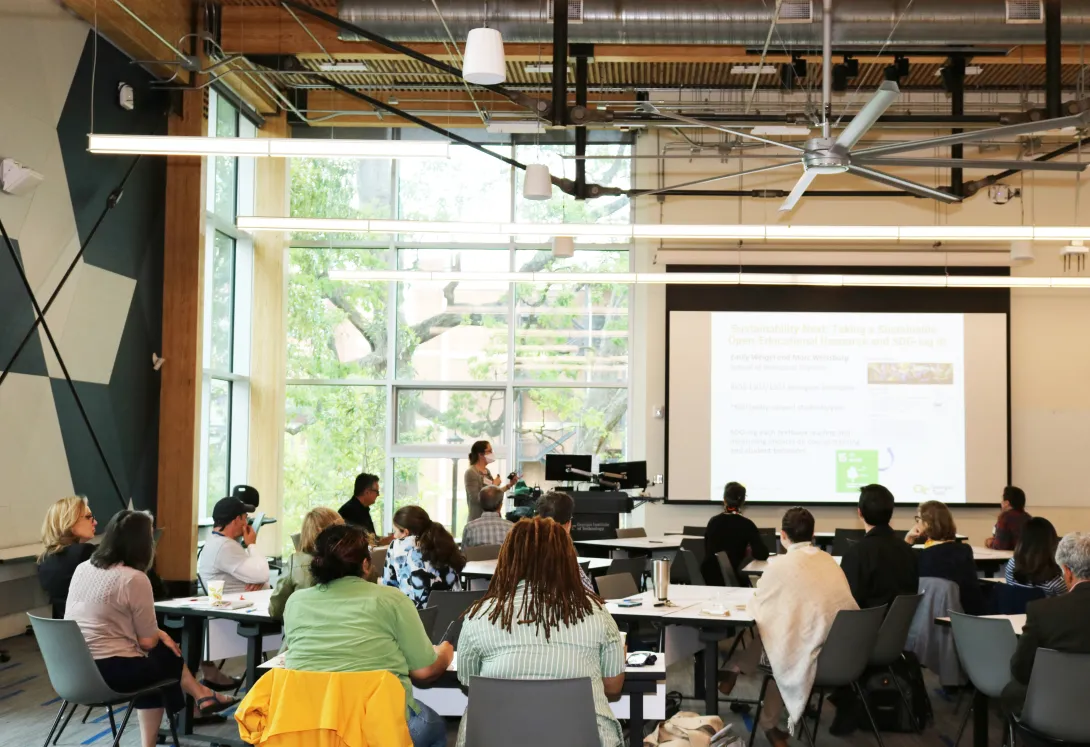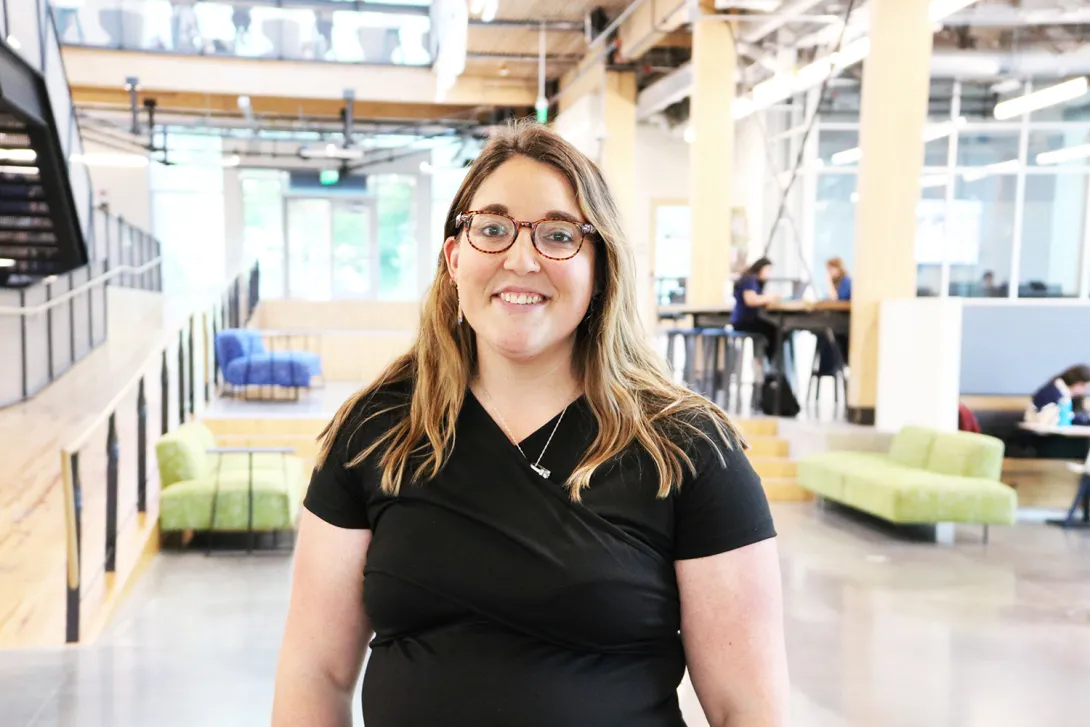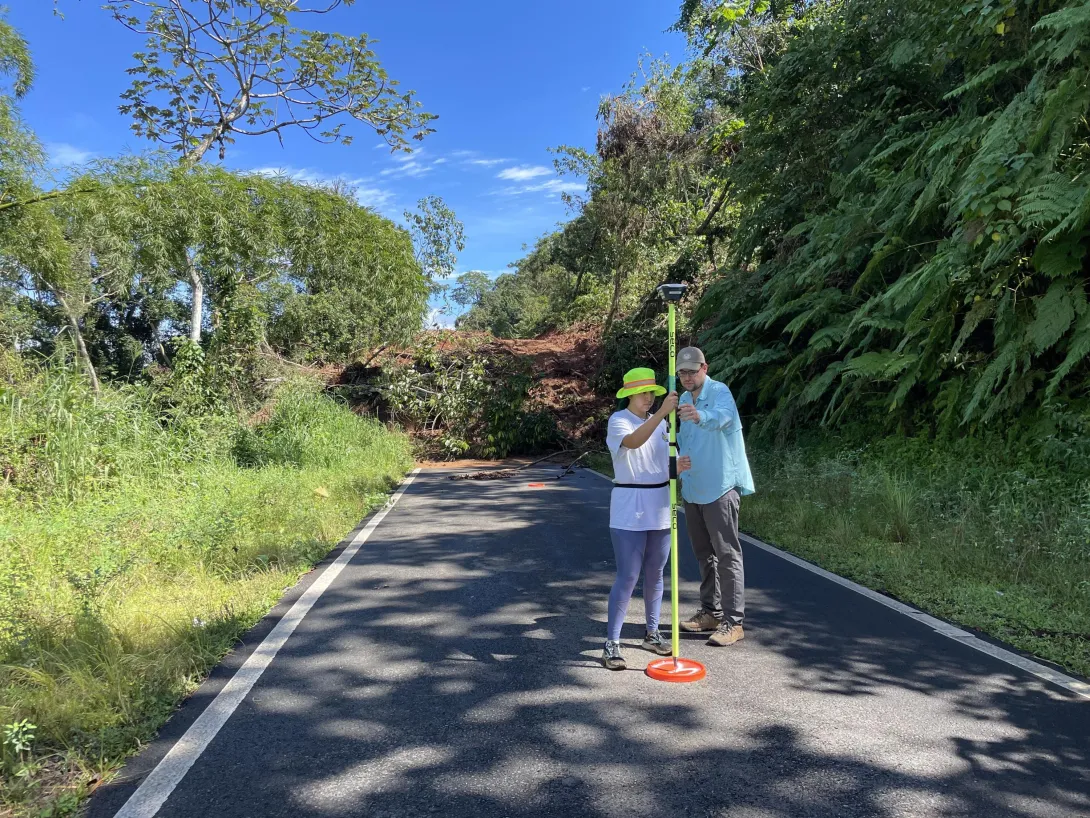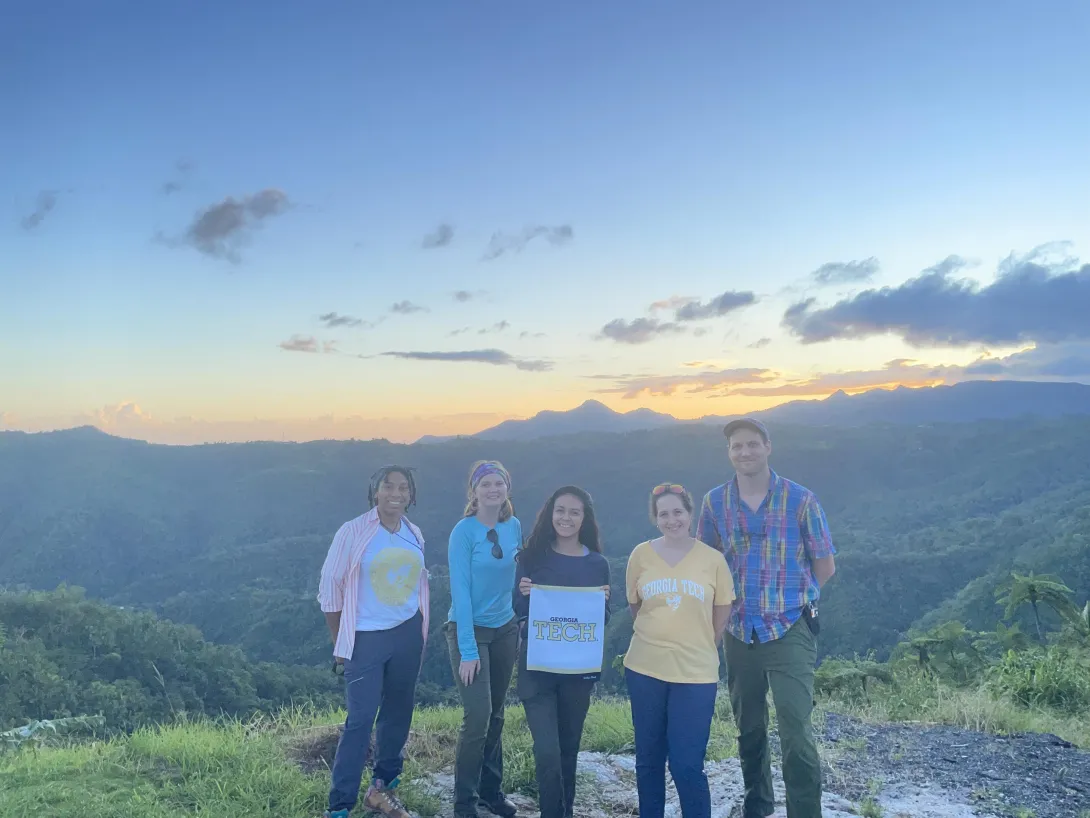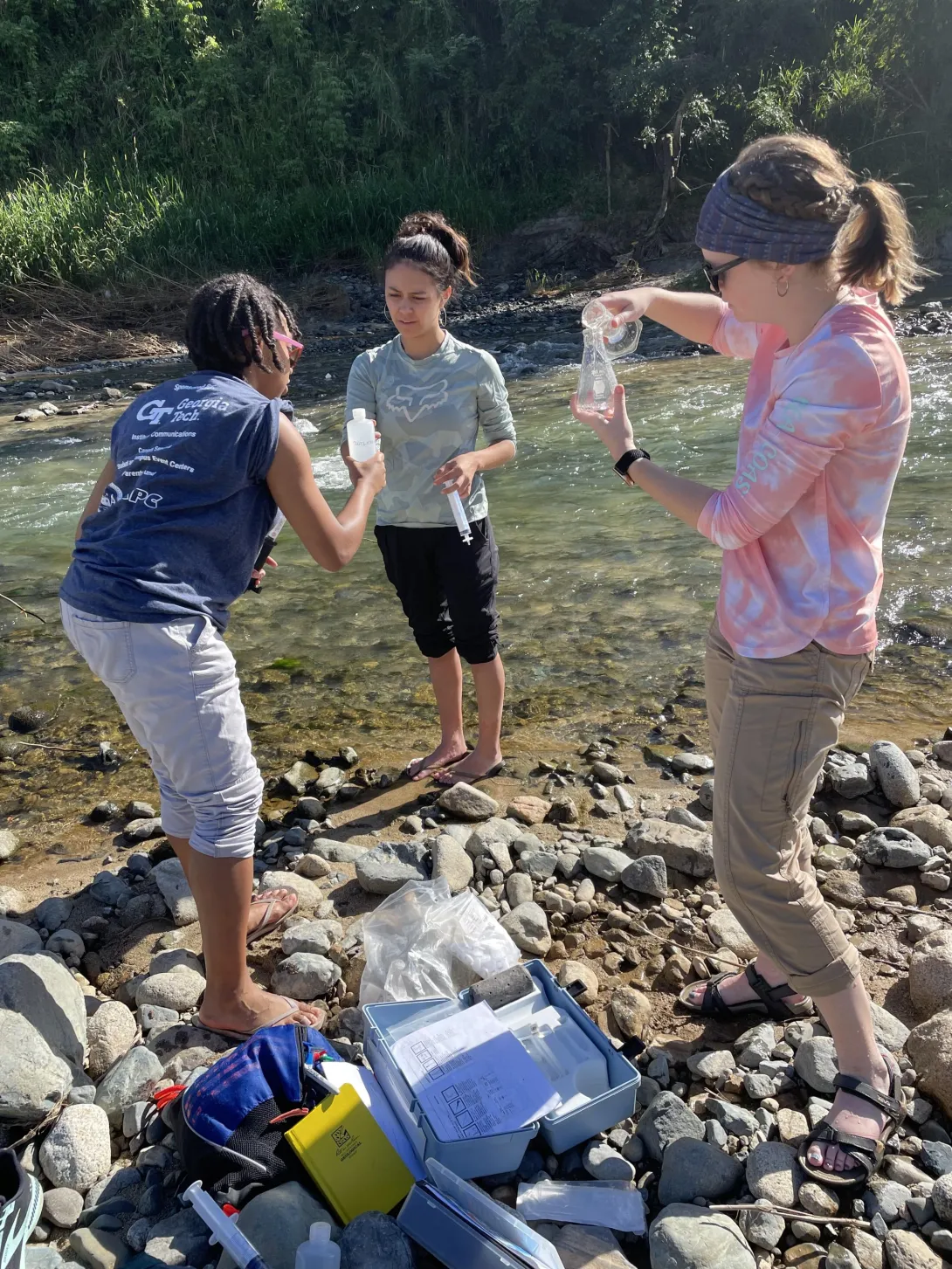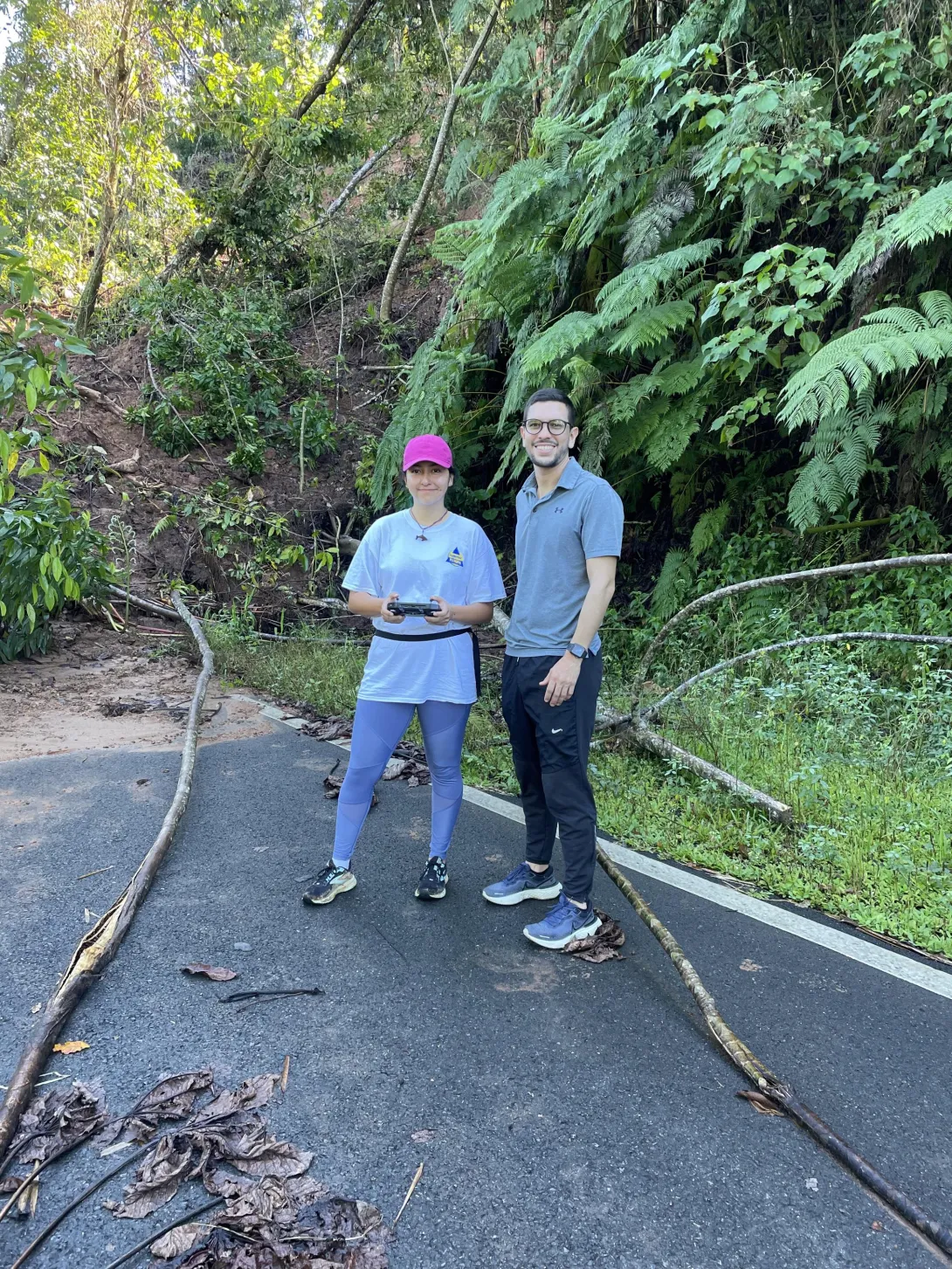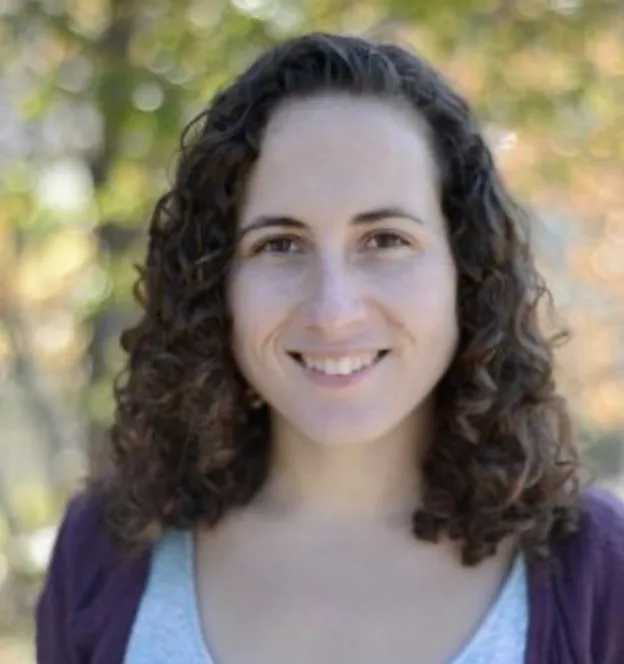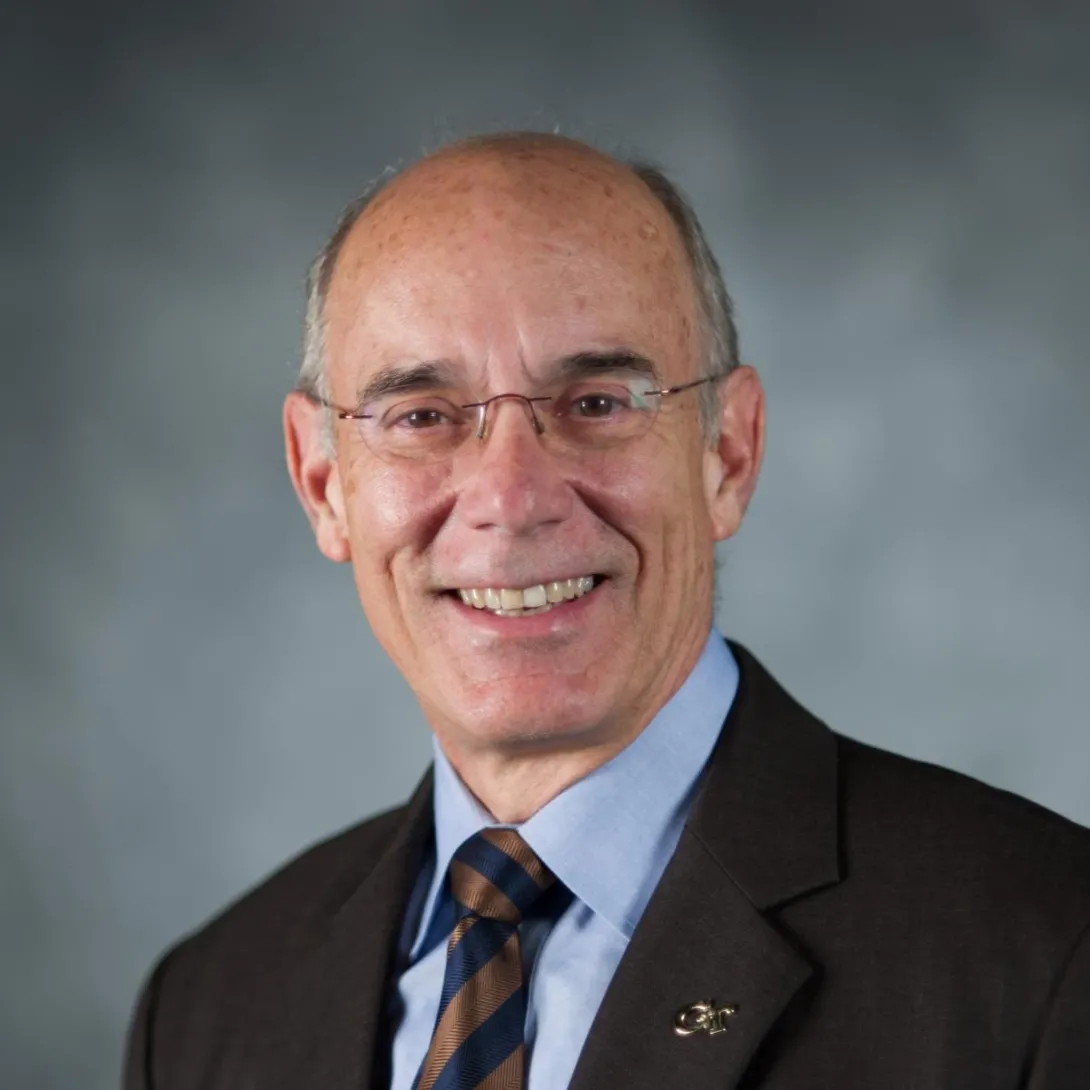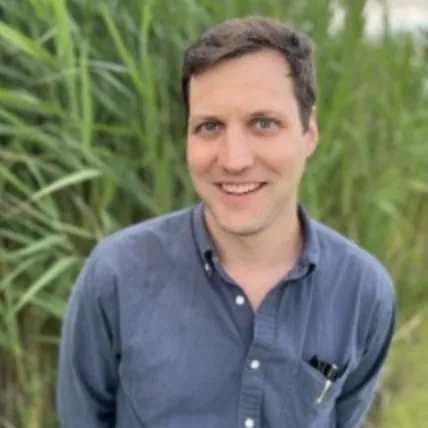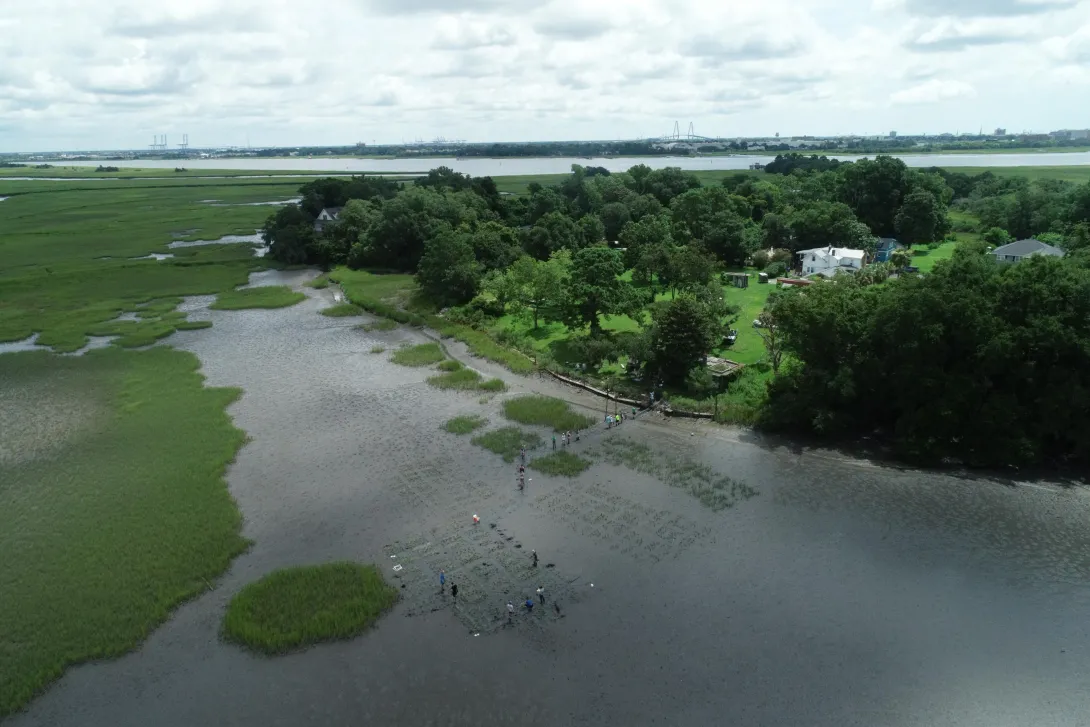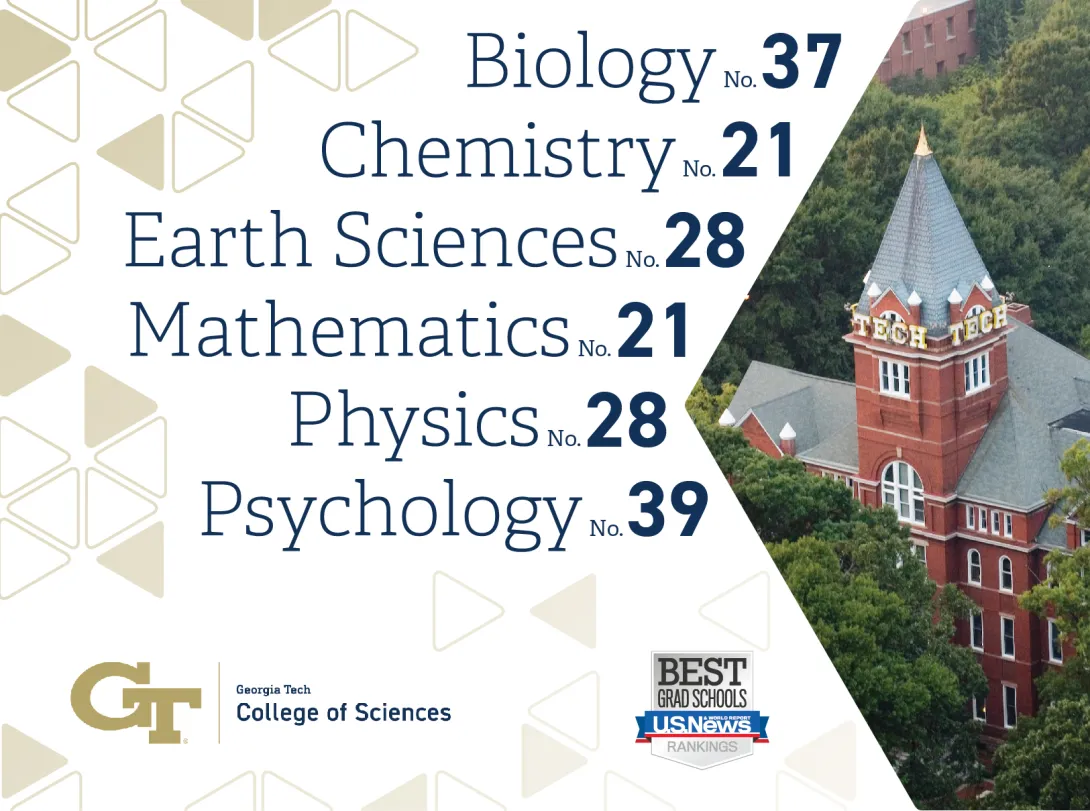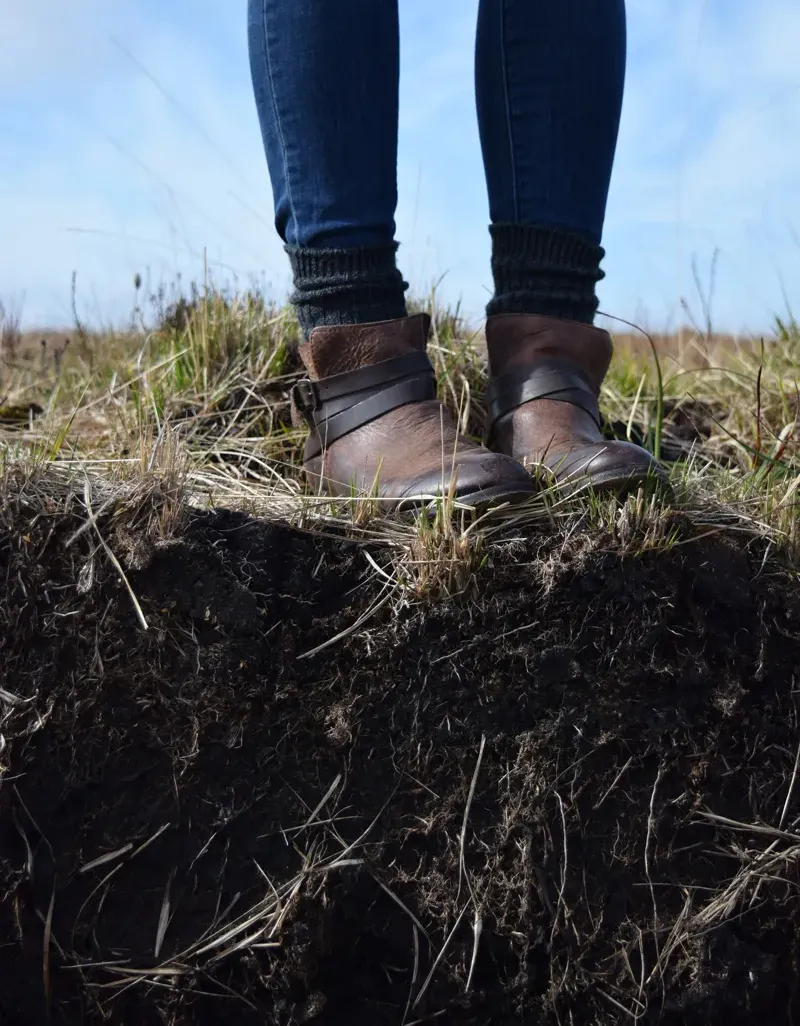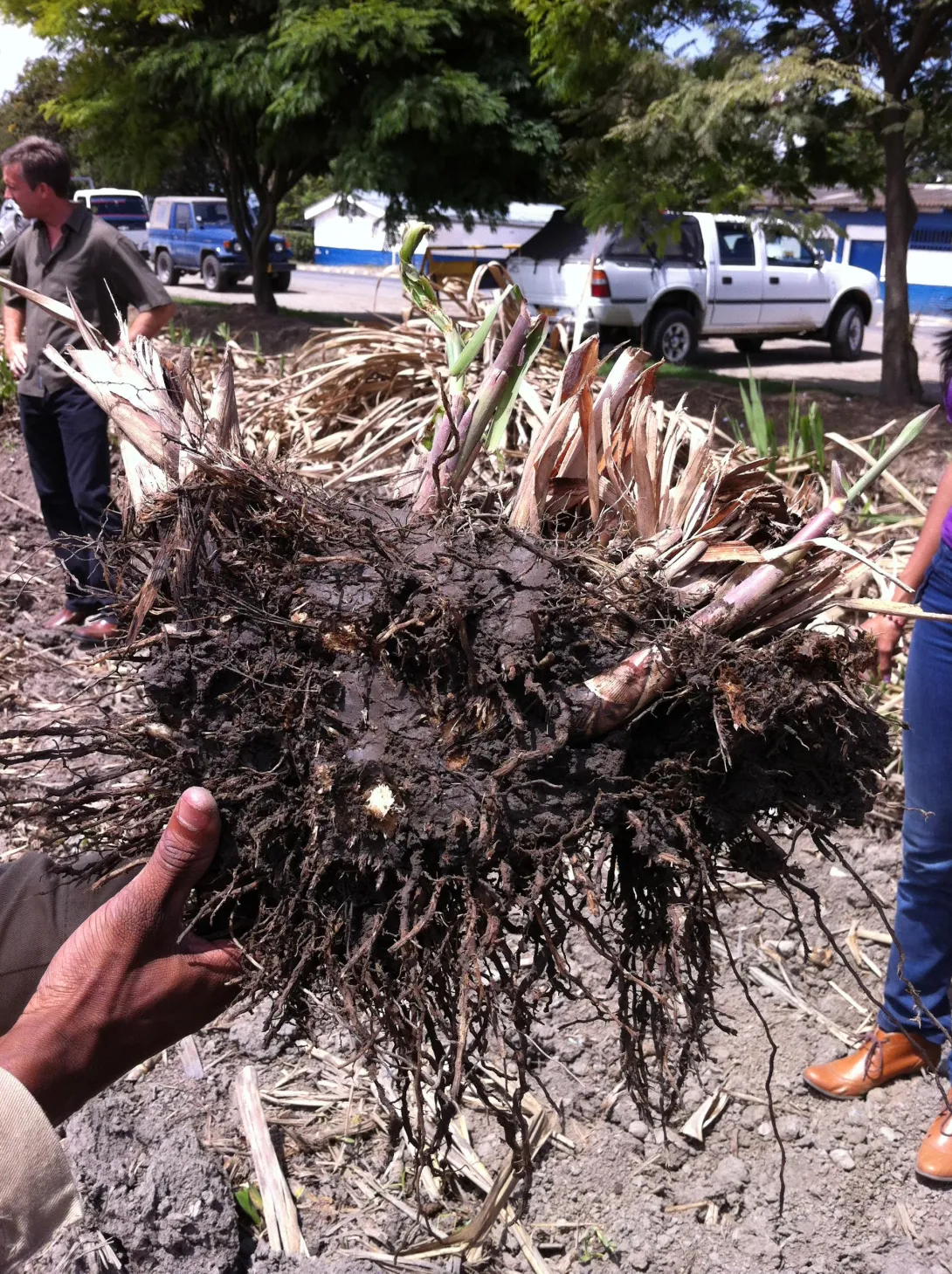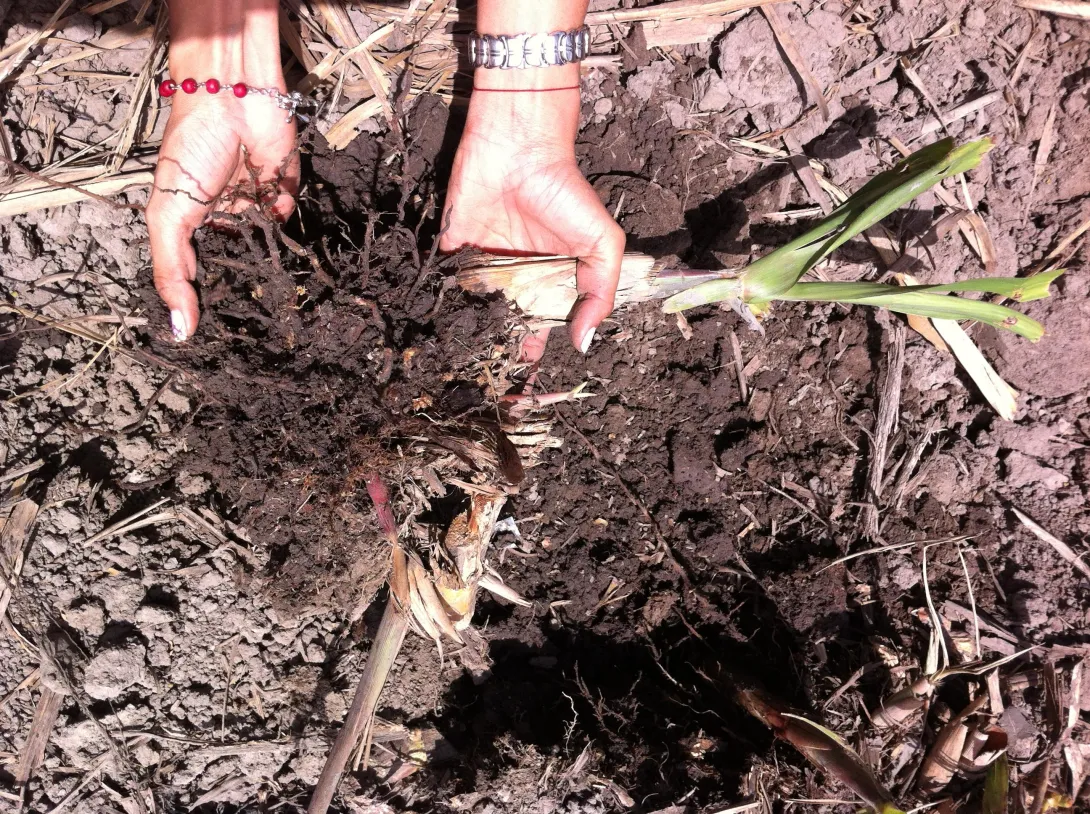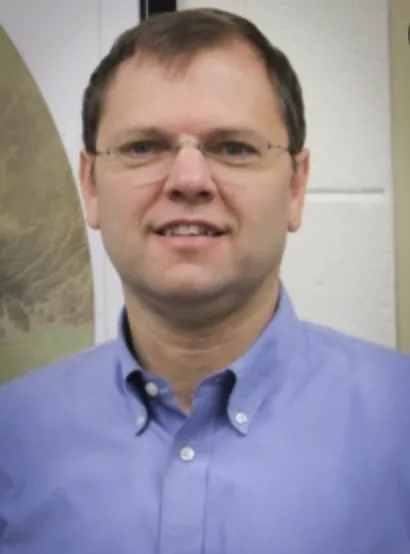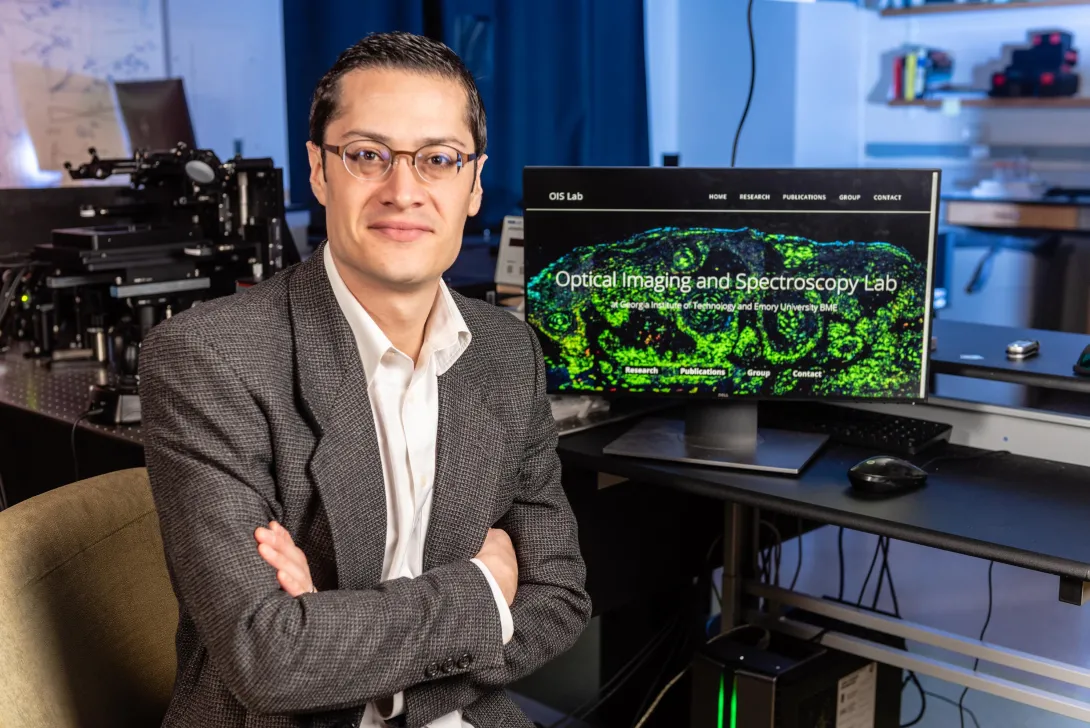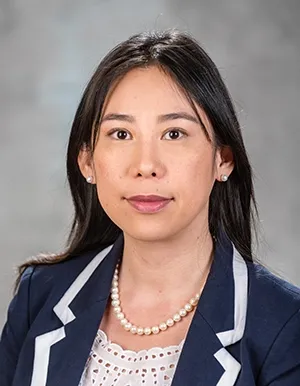May. 05, 2023
Six proposals from the College of Sciences will redesign existing courses and begin new ones to help students contribute to a sustainable world have been approved for Undergraduate Sustainability Education Innovation Grants. The proposals tie into the United Nations’ 17 Sustainable Development Goals (UN SDGs).
A total of 21 projects from all six Georgia Tech colleges will reach an estimated 22,500 students. The collaborative effort is focused on a key goal of the Institute’s Sustainability Next Task Force: to produce graduates who are committed to making a positive difference in their communities, their organizations, and the world.
“The overall goal is that all of our students understand the societal context for their work, as well as the scientific, environmental, economic, and social aspects of sustainability,” says Jennifer Leavey, assistant dean for Faculty Mentoring for the College of Sciences and co-chair of Sustainability Next.
Leavey and Rebecca Watts-Hull, assistant director of Faculty Development for Sustainability Education in the Center for Teaching and Learning, served as liaisons for the Undergraduate Sustainability Education Committee, which judged the proposals.
Leavey also coordinates College of Sciences educational programs related to science and sustainability, including the Georgia Tech Urban Honey Bee Project and the Living Building Science Vertically Integrated Project Team.
Leavey said the UN SDGs — which ask world citizens and their governments to consider ambitious solutions to longstanding problems such as hunger, poverty, climate damage, inequality, and lack of quality healthcare — are clear and compelling. “These are things we want for a better world,” she shared. “Every field has some connection to them. And it's just a very easy framework to get behind and understand. I would love it if all Georgia Tech graduates could leave feeling well versed in that understanding, and how their work connects to it.”
The Sustainable Education Committee chose projects that impacted the greatest number of students, including classes that are required for all Georgia Tech undergraduates.
Learn more about the College of Sciences’ six selected proposals:
Laboratory-Based Project on the Chemistry of Alternative Energy Sources
- CHEM 1211L, Chemical Principles I, Laboratory
- Deborah Santos, academic professional, School of Chemistry and Biochemistry
- 1000+ students impacted (majority first-year)
- “I hope that the students would have a better understanding of why they hear about these technologies as possible alternatives, and what obstacles there are to actual widespread implementation,” Santos said. “Maybe students will consider how they might play a role in overcoming those obstacles.”
Sustainability Next: Taking a Sustainable Open-Educational Resource And SDG-ing It
- Bios 1107/1207, Biological Principles
- Emily Weigel, senior academic professional, and Marc Weissburg, professor, School of Biological Sciences
- Approximately 650 early career students per year
- “I will take the textbook and each day link it to an SDG, so that when they come into class, we'll talk about the topics in the context of SDGs,” Weigel said. “By being a little bit more explicit about it, it's our goal that when they go from this intro course to later courses in their curriculum, they're primed to think about SDGs, and then they recognize the connections that are there.”
Georgia Climate Project
- EAS 4813 — This is a new course within the School of Earth and Atmospheric Sciences’ new interdisciplinary Environmental Science (ENVS) undergraduate degree program with the School of Biological Sciences, and part of a partnership with the Georgia Climate Project, a state-wide consortium of universities, colleges and partners working to improve understanding of climate impacts and solutions in Georgia.
- Zachary Handlos, senior academic professional, School of Earth and Atmospheric Sciences
- 10-20 students impacted per year
- “This course would provide students an opportunity to participate in hands-on learning within the context of ‘real-world’ sustainability-related projects in partnership with the Georgia Climate Project, complementing topics and coursework covered in Samantha Wilson’s EAS 4803: EAS & Policy course,” Handlos said. “Work includes participation in climate change, sustainability, and climate equity and justice research, as well as the creation and dissemination of tools and resources.”
Urban Atlanta’s Water and Atmospheric Signatures
- EAS 1600: Introduction to Environmental Science (EAS Majors) Laboratory: Urban Atlanta Atmospheric Measurements, combined with another Lab course, Urban Water Quality Measurements and Microbial Ecology Exploration using Proctor Creek Watershed
- Jennifer Glass, associate professor, and Shelby Ellis, lecturer, School of Earth and Atmospheric Sciences
- 20-40 students per year, EAS majors only
- “Through field trips, students will investigate current climate change-induced conditions in urban Atlanta, with students collecting real time weather and watershed data-measurements to learn more about SDGs surrounding urban sustainable cities and clean water,” Ellis said. “In this reconfigured learning environment, we hope to foster student momentum on becoming educational leaders in their local community on climate justice, while gaining an understanding that there are attainable climate actions that can be taken now to combat climate change.” ”
Developing and Enhancing Experiential Learning in a New EAS Course
- EAS 4803: EAS & Policy, offered in new Environmental Science (ENVS), Solid Earth & Planetary Science (SEP), and Atmospheric and Oceanic Science (AOS) undergraduate degree programs in College of Sciences
- Samantha Wilson, academic professional, School of Earth and Atmospheric Sciences
- 25 students during spring semesters in even-numbered years
- “The course is designed to introduce students to the scientific background of topics such as water, hydrocarbons, air, and earthquakes before discussing related policies and persistent issues,” Wilson said. “Through discussions on each topic that involve science and policy, students can work towards understanding why current policies exist the way they do and how they can be improved.” The course will also involve guest speakers, and is meant to be taken before Handlos’ EAS 4813 course.
Course Redesign to Implement Project-Based Learning for Social Change
- APPH 1040, Foundations of Health
- Teresa Snow, senior academic professional, School of Biological Sciences
- Approximately 200 students per year
- “It is my hope that working towards solutions to complex societal health issues will create a sense of empowerment for our students that counteracts feelings of helplessness,” Snow said. “A cross-disciplinary approach, which is the focus of this project, will provide a better understanding of the process of large-scale social change, a critical requirement for achieving the third SDG, which is to ensure healthy lives and promote well-being for all ages. Breaking down the social barriers to good health will benefit everyone.”
On April 27, the Undergraduate Sustainability Education Committee hosted a Jamboree, which featured faculty from each Georgia Tech college that won grants — making brief presentations, and engaging in networking discussions.
“For the College of Sciences, it's really exciting to see the connection between different disciplines,” Leavey said. “We’ve been doing work on climate and the environment for a long time, but to see the connection with sustainability work at other colleges at Georgia Tech is very gratifying.”
News Contact
Writer: Renay San Miguel
Communications Officer II/Science Writer
College of Sciences
404-894-5209
Apr. 20, 2023
On April 26, 2023, the School of Physics and College of Sciences at Georgia Tech will welcome Stanford University physicist Steven Chu to speak on climate change and innovative paths towards a more sustainable future. Chu is the 1997 co-recipient of the Nobel Prize in Physics, and in his former role as U.S. Secretary of Energy, became the first scientist to hold a U.S. Cabinet position.
About the Talk
The event is part of the School of Physics “Inquiring Minds” public lecture series, and will be held at the Ferst Center for the Arts. The talk is free and open to campus and the Atlanta community, and no RSVP is required. Refreshments begin at 4:30, and the lecture will start at 5 p.m. ET.
“The multiple industrial and agricultural revolutions have transformed the world,” Chu recently shared in an abstract for the lecture. “However, an unintended consequence of this progress is that we are changing the climate of our planet. In addition to the climate risks, we will need to provide enough clean energy, water, and food for a more prosperous world that may grow to 11 billion by 2100.”
The talk will discuss the significant technical challenges and potential solutions that could provide better paths to a more sustainable future. “How we transition from where we are now to where we need to be within 50 years is arguably the most pressing set of issues that science, innovation, and public policy have to address,” Chu added.
The event’s faculty host is Daniel Goldman, Dunn Family Professor in the School of Physics at Georgia Tech.
About Steven Chu
Steven Chu is the William R. Kenan, Jr. Professor of Physics and a professor of Molecular and Cellular Physiology in the Medical School at Stanford University.
Chu served as the 12th U.S. Secretary of Energy from January 2009 until the end of April 2013. As the first scientist to hold a U.S. Cabinet position and the longest serving Energy Secretary, Chu led several initiatives including ARPA-E (Advanced Research Projects Agency – Energy), the Energy Innovation Hubs, and was personally tasked by President Obama to assist in the Deepwater Horizon oil leak.
In the spring of 2010, Chu was the keynote speaker for the Georgia Tech Ph.D. and Master's Commencement Ceremony.
Prior to his cabinet post, Chu was director of the Lawrence Berkeley National Laboratory, where he was active in pursuit of alternative and renewable energy technologies, and a professor of Physics and Applied Physics at Stanford, where he helped launch Bio-X, a multi-disciplinary institute combining the physical and biological sciences with medicine and engineering. Previously he also served as head of the Quantum Electronics Research Department at AT&T Bell Laboratories.
He is the co-recipient of the 1997 Nobel Prize in Physics for his contributions to laser cooling and atom trapping. He is a member of the National Academy of Sciences, the American Philosophical Society, the American Academy of Arts and Sciences, the Pontifical Academy Sciences, and of seven foreign academies. He formerly served as president, and then chair of the American Association for the Advancement of Science.
Chu earned an A.B. degree in mathematics and a B.S. degree in physics from the University of Rochester, and a Ph.D. in physics from the University of California, Berkeley, as well as 35 honorary degrees.
He has published over 280 papers in atomic and polymer physics, biophysics, biology, bio-imaging, batteries, and other energy technologies. He holds 15 patents, and an additional 15 patent disclosures or filings since 2015.
News Contact
Jess Hunt-Ralston
Director of Communications
College of Sciences at Georgia Tech
Feb. 15, 2023
For three Georgia Tech researchers, a trip last fall to Puerto Rico to study how Hurricane Fiona changed the island was also personal.
In October 2022, Frances Rivera-Hernández headed to the island. On this trip, she was joined by research partners, Karl Lang, a fellow assistant professor in the School of Earth and Atmospheric Sciences, and Rafael Bras, also of Georgia Tech.
Bras is the K. Harrison Brown Family Chair and a professor in the School of Civil and Environmental Engineering (CEE) with a joint appointment in Earth and Atmospheric Sciences — and, like Rivera-Hernández, a native of Puerto Rico. For a decade, he served as provost and executive vice president for Academic Affairs at Georgia Tech, and today he continues to research ways to protect communities from disasters.
In October, the research team’s mission was to learn more about how Hurricane Fiona, which hit in September 2022, had devastated the island’s landscape — and how it had potentially created other long-term geohazards like unstable hill slopes, debris and rock falls, and landslides.
Supported by National Science Foundation (NSF) funding, the researchers’ ultimate goal is to one day create a national center for the study of geohazards, “with Georgia Tech as the lead institution,” Bras said. “We surmise there will be several ‘hubs’, one of which would be Puerto Rico.”
While it was still a major, deadly storm, Fiona turned out to be less damaging than Hurricane Maria, the 2017 storm that was one of the worst to strike Puerto Rico. After Maria, both Rivera-Hernàndez and Bras had to deal with long-term power outages affecting cell phones before they could check in on loved ones.
Fiona did give the researchers a chance to gather more data on surface hazards in the wake of a natural disaster. “We can use that information to better prepare communities,” Rivera-Hernández said. “That's another thing that we're working on with the geohazards, developing something called ‘Landslide Ready,’ which would be able to educate the public on if a landslide does happen, you know what you should do. But before that, we need to know. Where are they more frequently occurring? What's the cause? How much rain is needed to induce a landslide? We need science so we can better educate communities.”
‘Anything that has to do with Puerto Rico is personal’
Both Rivera-Hernández and Bras lived through hurricanes as they were growing up on the island, and both have seen the wide-reaching impact of major storms’ wind gusts, flooding, and landslides on friends and families.
When Maria hit the island, Bras’ niece, who runs a farm growing culinary mushrooms, had to deal with a months-long power outage that affected refrigeration and distribution.
“Maria was so catastrophic. I cannot begin to describe how catastrophic it was. It was equal opportunity that way.” Bras also had a friend on the island who worked as an executive for a major business in Puerto Rico. “And for a month, he didn't do anything but get up in the morning and drive around looking for water and food. At least he still had some money here, and he still had a car. He still could get gas for it, but he had to wait in lines for half a day to get gas. Everybody had to do it.”
Basic communications are always a problem during hurricanes, especially Maria, Rivera-Hernández said. “Fiona wasn't as bad. Hurricane Maria was really, really bad. People didn't have power for six months to a year. The magnitude and how many people it impacted was greater, compared to Fiona.”
No power means no cellphones, no gas for cars, and no way to use credit cards, an aftereffect of major hurricanes that has left its impact on island residents. “Yes, have a stash of cash,” said Rivera-Hernàndez. “I think Puerto Ricans are generally using more cash than on the mainland. That’s another example of something that was big at the time.
“I think it took like a week or two just to communicate to people and Puerto Rico because the whole power system was out, which means the cell networks are completely out — it took a long time for people outside of Puerto Rico to even learn what’s going on because nothing was getting out.”
As a planetary geologist, Rivera-Hernández’s primary research interests are astrobiology and planetary science — think Mars rovers and ancient lake beds in Antarctica. Before this effort with Bras and Lang, she had never studied landslides before the two hurricanes hit the island. “Most of my work is focused on trying to better understand other planetary bodies. But when Rafael and I started talking about this, we decided this is something that's really important to us. It was a no-brainer.”
And as Rivera-Hernández, Bras, and Lang work together with students and a network of researchers to unlock remaining mysteries of landslides, the people their research could help the most in Puerto Rico are those living in the island’s interior, with its steep hillsides.
“I think that's an important point to make because those are often parts of the community that are very easily isolated,” Lang said, “and it's often the isolation that is deadly — for example, when power isn't restored to a hospital that's remote.”
Rural and remote risks
The effort to study Hurricane Maria’s geohazards has already earned the wider team — which includes researchers from the University of Puerto Rico at Mayagüez (UPRM) and the University of Colorado, Boulder — a National Science Foundation Track One Center Catalyst grant for their proposal: “Collaborative Center for Landslides and Ground Failure Geohazards.” “UPRM is instrumental in this effort,” Lang said. “The work would not be possible without them.”
More recently, a GEER (Geotechnical Extreme Events Reconnaissance) expedition associated with Hurricane Fiona has helped Bras, Lang, and two CEE students, Paola Vargas Vargas and Jorge Lozano Ramirez, remain on the island to continue their research and study evidence left by the storms. Sponsored by the NSF, GEER is an initiative developed by geotechnical earthquake engineering community members to study infrastructure damage from natural disasters, and it can be rapidly awarded after those disasters strike.
After Fiona, the trio of researchers were able to quickly apply for two more grants, one from the Heising-Simons Foundation and an NSF Rapid Response Research (RAPID) Award. That allowed them to revisit the island in November 2022 to gather more data. “They (NSF) try to be quick in responding to situations that were not foreseen,” Lang said. “We got the RAPID funded because landslides, as they happen, are being removed by people on the ground who need to clear the road. The RAPID supports us to collect information before it is lost.”
The sources of funding target various needs for the team. “What we've been doing is cobbling together different sources of money to be able to do both the scientific side, and then also setting up this broader community geohazards center.” Bras is currently working on an NSF Track II funding grant that would help establish that center.
The NSF Track I geohazard proposal and the RAPID Award “have clear societal relevance,” Lang added. “By mapping the location, volume and mechanism of landslide failure after a storm event we can better predict where and how landslides may occur after future storm events. Similarly, by recording how floods transport landslide-derived sediment, we can predict the area and volume of flood inundation.”
News Contact
Writer: Renay San Miguel
Contributor: Laurie E. Smith
Communications Officer II/Science Writer
College of Sciences
404-894-5209
Jan. 23, 2023
Beginning Summer 2023, prospective and current Georgia Tech students will have three new Bachelor of Science degrees to choose from in the School of Earth and Atmospheric Sciences. The expanded undergraduate offerings target a wider range of job and research opportunities — from academia to analytics, NASA to NOAA, meteorology to marine science, climate and earth science, to policy, law, consulting, sustainability, and beyond.
The Board of Regents of the University System of Georgia has approved two new specific degrees within the School: Atmospheric and Oceanic Sciences (AOS) and Solid Earth and Planetary Sciences (SEP). Regents also approved Environmental Science (ENVS) as an interdisciplinary College of Sciences degree between the School of Earth and Atmospheric Sciences and the School of Biological Sciences. The existing Earth and Atmospheric Sciences B.S. degree will sunset in two years for new students.
“We are really excited to be able to offer this new interdisciplinary undergraduate degree program in Environmental Science,” said Jean Lynch-Stieglitz, ADVANCE Professor in Earth and Atmospheric Sciences (EAS). “While it was developed jointly between the Schools of Earth and Atmospheric Sciences and Biological Sciences, it brings together Georgia Tech’s broad expertise and course offerings related to the Earth’s environment from across the Institute.”
“We are excited to see these new programs develop,” added Andrew Newman, professor and the School’s undergraduate coordinator, “as these degrees highlight the quantitative and computational skills of Georgia Tech students, and align better with their interests in global understanding of problems related to environmental impact and sustainability, natural hazards and landscape development, as well as planetary evolution, habitability, and exploration.”
“Students looking for specific types of programs will also be more understanding of what their program offers,” Newman said. “Under our current degree, a student interested in ocean science, planetary science, and environmental chemistry all would be looking at the same degree that doesn’t define their interests. Now, having programs with those interests in their name, and described well on the upcoming webpage, will greatly increase their interest in our program.”
The Evolution of EAS at Georgia Tech
Newman also shared that, in Fall 2021, the School surveyed current EAS undergraduate students and recent alumni for feedback and thoughts on the potential degrees. Responses from the community highlighted that the plan for transitioning the existing major could not only help new students hone their academic and career plans, but also help them communicate beyond EAS about their chosen major.
“These degrees make it more clear what the student is studying,” shared one student. “Before, people would ask what my major ‘even is’ and what kinds of jobs I could get with it. I think the new majors make it more clear.”
“Finally, Planetary Science!” said another student. “This degree would go well with a Physics or AE (Aerospace Engineering) certificate or dual degree.”
All about the new Georgia Tech EAS degrees
The expanded undergraduate degree offerings are designed to continue Georgia Tech’s reputation for academic rigor — and also reflect trends in student interests, as well as current and forecasted needs in the job marketplace.
“A key aspect of the new Environmental Science degree program will be its flexibility,” said Lynch-Stieglitz. “Students will be able to focus their study to support their interests and career goals whether those be in conservation, climate change, or environmental health. We’ve also left space in their program to encourage participation in especially impactful experiences such as study abroad and research projects. Georgia Tech students are fantastic — well prepared, diverse, smart, hard-working, and passionate. This flexible approach will allow them to become the broadly educated leaders who will envision the solutions to environmental problems that are so urgently needed.”
More on the new undergraduate degrees and what they will require:
B.S. Atmospheric and Oceanic Sciences (AOS) Degree
AOS uses the current Meteorology track as its foundation and will include aspects of Atmospheric Sciences, Oceanography and Climate Sciences.
EAS will continue to offer courses needed for American Meteorological Society (AMS) certifications as well as those required for eligibility for National Weather Service meteorology jobs.
Some courses will be reduced and others added (e.g. the existing course Physics of Weather will now be formally required instead of Earth Processes; the National Weather Service Practical Internship course in partnership with NWS Peachtree City will continue).
The AOS degree is designed to take advantage of Atlanta as a “hotspot” for major meteorological organizations including The Weather Channel, CNN, local stations in a top 10 TV market, and the National Weather Service (NWS) Peachtree City, Georgia office. The degree also builds on Georgia Tech’s existing expertise in Atmospheric Chemistry, Oceanography, Climate Dynamics, Paleoclimatology and Paleoceanography, and meteorological research.
AOS degree recipients looking for jobs or graduate research can target the energy sector, insurance risk modeling, broadcast meteorology, consulting, data analytics, aviation, military, and K-12 education, among other positions.
B.S. Environmental Science (ENVS) Degree
ENVS was developed by a joint committee involving EAS and the School of Biological Sciences.
ENVS requires core content in mathematics, physics, chemistry, biology, Earth sciences, and public policy.
Upper level coursework allows students to customize their program of study based on interest.
Students will complete a capstone research project that integrates the knowledge they have gained through the program.
This degree takes advantage of Georgia Tech’s expertise in Environmental Chemistry, climate science, marine science, Aquatic Chemical Ecology, microbial dynamics, and Environmental Policy. Newman added that there is a critical emerging market need for scientists with expertise in the Earth’s environmental systems.
The ENVS degree will provide a strong base for students pursuing graduate programs and careers in environmental policy, environmental law, medicine, and other master’s and Ph.D. programs in environmentally related disciplines.
B.S. Solid Earth and Planetary Sciences (SEP) Degree
SEP builds on the existing Earth Science track to include Planetary Sciences.
There is an opportunity to reduce some courses.
Some courses will now be required (e.g. Physics II, Physics of Planets, Introduction to Geophysics).
According to an SEP prospectus, “the degree will support Georgia Tech’s mission to develop leaders who advance technology and improve the human condition, through developing holistically minded students that can put human development in context of the environment for which we live, including resource availability, hazards that affect sustainability, and our exploratory nature to understand our place on the planet and solar system.”
Career and graduate opportunities include energy sector positions, NASA, NOAA, U.S. Geological Survey, environmental remediation, hazard assessment and data analytics.
Learn more, contact EAS Undergraduate Advising, and apply:
News Contact
Writer: Renay San Miguel
Communications Officer II/Science Writer
College of Sciences
404-894-5209
EAS Undergraduate Program Contacts:
eas.gatech.edu/undergraduate
Editor and Media Contact:
Jess Hunt-Ralston
Director of Communications
College of Sciences at Georgia Tech
Dec. 06, 2022
For marine scientist, climate activist, and Tech alumnus Albert George (MS HSTS 2009), the fight against climate change is also a fight for home.
Now, what started as a citizen science initiative led by George has turned into a $2.6 million National Fish and Wildlife Association effort to restore degraded salt marshes in Charleston, South Carolina. As part of the project, Joel Kostka, professor and associate chair of Research in the School of Biological Sciences, will lead a team of researchers to not only monitor these restoration efforts, but gain insights into why the marshes degraded in the first place — and how to prevent it from happening in the future.
Over the past three years, Kostka, who has a joint appointment in the School of Earth and Atmospheric Sciences, has worked with SCDNR and Robinson Design Engineers, a local firm co-led by Tech alum Joshua Robinson (CEE 2005), to develop engineering and design plans for the restoration of the salt marshes.
“That project went really well,” shared Kostka, “and now we have developed engineering and design plans for the actual restoration as we are moving forward with the next phase.”
Work for the current phase of the project is set to begin soon. Over the next four years, community volunteers will work to plant marsh grasses, restore oyster reefs, and excavate the tidal creeks that supply the marsh with sea water.
“Because if we don't do this work,” George shared, “then basically it means a place that I grew up in and a place that I call home will no longer exist.”
News Contact
Writer:
Audra Davidson, College of Sciences
Editor and Contact:
Jess Hunt-Ralston
Director of Communications
College of Sciences at Georgia Tech
Mar. 29, 2022
The College of Sciences at Georgia Tech continues to make progress in the graduate school rankings published by U.S. News and World Report.
Released on March 29, the 2023 U.S. News Best Graduate School Rankings highlights all six College of Sciences schools as best overall science programs for graduate studies:
Biology – No. 37
Chemistry – No. 21
Earth Sciences – No. 28
Mathematics – No. 21
Physics – No. 28
Psychology – No. 39
Biological Sciences rose 17 places (from No. 54) in a nine-way tie with Albert Einstein College of Medicine, Brown University, Carnegie Mellon University, Dartmouth College, Indiana University-Bloomington, Ohio State University, University of Utah, and UT Health MD Anderson Cancer Center.
Chemistry and Biochemistry shifted from No. 20 in a four-way tie with Johns Hopkins University, University of California (UC)-San Diego, and Texas A&M University-College Station.
Earth and Atmospheric Sciences rose by 10 (from No. 38) in a tie with Ohio State University, University of Southern California, and Washington University in St. Louis.
Mathematics advanced by five, up from No. 26 in a tie with Carnegie Mellon, Johns Hopkins, UC-San Diego, and University of Illinois Urbana-Champaign.
Physics maintains its No. 28 ranking in a tie with Brown University, Duke University, and Rice University.
Psychology rose six spots to No. 39 in a tie with Arizona State University, Michigan State University, Stony Brook University, University of Florida, University of Iowa, and University of Pittsburgh.
U.S. News previously ranked graduate science programs in their 2019 Best Graduate Schools Edition (published in March 2018) with the exception of Psychology, which is categorized under U.S. News “Social Sciences and Humanities” programs and was last ranked in the 2017 Edition.
Among specialty graduate programs, Analytical Chemistry and Condensed Matter (Physics) both rank in the top 20, while previously unranked Applied Math climbed into the top 16 to No. 11.
Mathematical Analysis and Topology tied for No. 18 and No. 15, respectively, and Tech remains top five in the nation for Discrete Math and Combinatorics. Uniquely organized across the Colleges of Sciences, Computing, and Engineering, the Institute’s Algorithms, Combinatorics, and Optimization program previously held a rank of No. 2.
Analytical Chemistry – No. 17
Applied Math – No. 11
Condensed Matter – No. 18
Discrete Math and Combinatorics – No. 5
Mathematical Analysis – No. 18
Topology – No. 15
“I was very happy to see that several of our schools in the College of Sciences moved up in the rankings, in some cases quite significantly,” shares Matthew Baker, professor in the School of Mathematics and associate dean for Faculty Development in the College.
Fellow colleges on campus are also on the rise in the latest U.S. News “Best Graduate Schools” set, with Engineering remaining in the top ten in its overall disciplines, and Business, Computing, and Public Affairs also ranking among top programs in the nation. The full roster of current Georgia Institute of Technology rankings can be found here, along with U.S. News’ methodology for graduate rankings here.
News Contact
Jess Hunt-Ralston
Director of Communications
College of Sciences at Georgia Tech
Dec. 02, 2021
An interdisciplinary team of researchers from the Georgia Institute of Technology has received a $2 million federal grant to create tools that will provide the clearest three-dimensional images yet of the chemical and biomolecular interactions between plants and the soil in which they grow.
At just a few inches underground, the rhizosphere — the thin strip of earth that includes the soil-root interface — has so far been difficult to visualize on site. If scientists can build instruments that capture in real-time clearer images of the physical associations of microbes attached to roots, along with the oxygen-carbon-nitrogen chemical exchanges they mediate, it could help mitigate the effects of climate change and lead to the development of more sustainable fuels and fertilizers.
“From a microbiological perspective, we have catalogued what microbes are in the root zone and how abundant they are,” said Joel Kostka, professor in the School of Biological Sciences and School of Earth and Atmospheric Sciences at Georgia Tech. “But there's been very little work to understand their dynamics under real soil conditions.”
Kostka, who also serves as associate chair for Research in Biological Sciences, joins Marcus Cicerone, professor in the School of Chemistry and Biochemistry and principal investigator for the new grant from the U.S. Department of Energy’s Office of Biological and Environmental Research. The research team also includes Francisco Robles, assistant professor in the Wallace H. Coulter Department of Biomedical Engineering, and Lily Cheung, assistant professor in the School of Chemical and Biomolecular Engineering in the College of Engineering.
Together, the researchers plan to produce a new optical instrument that will provide 3D images of dynamic metabolic processes with chemical specificity — meaning it will be able to identify carbon sources (sugars, organic acids) exuded by plant roots and nitrogen-rich compounds provided to the root by nitrogen-fixing (diazotrophic) microbes. The instrument will be built with commercially available components, and with an eye towards simplicity so that it can be easily leveraged by Department of Energy (DOE) Bioenergy Research Centers and field sites.
A ‘hotspot for microbes’ in 3D
Understanding more about the metabolic processes happening in the rhizosphere will help the DOE develop a wider range of sustainable products like new types of biofertilizers and biofuels. The research will also help create practices for better crop management — and will help researchers use plants and soil as more effective carbon traps that sequester greenhouse gases from the atmosphere into the soil.
“The problem is that we don’t know much about the free-living bacteria in the soil, because we can’t get in there and look,” Cicerone said. “The DOE wanted somebody to build an instrument that would allow them to image or gather information about the metabolic processes, the interaction — the metabolic interactions between the microbes and the plants, in real time.”
Kostka adds that the rhizosphere is “a hotspot for microbes.”
“It’s often where the plant is communicating with the outside world,” he explained. “Our goal is to develop an instrument that they (the DOE) can use to better understand those interactions between plants and microbes and how those can be tweaked, say, to optimize plant production, crop production, biofuels and biomass production. And that's the long-term goal for us.”
How light gets scattered, smothered, and covered in soil
Cicerone says the visibility issue with soil involves how photons — or particles of light — scatter once they hit the soil. He likens it to someone putting a red light up to the back of their thumb.
“You turn your thumb around, your thumb glows red, right? So, the light comes through, but most of it scatters. The unscattered light contains the spatial information, but it is so weak that you can’t detect it by eye, and you lose the spatial information. The same thing happens with the soils. You get a lot of light scattering, and you lose spatial information,” Cicerone said.
Cicerone and Robles will build instrumentation that will focus light into the soil and that is “exquisitely sensitive to the minuscule amount of light that only scatters when it reaches its target.” Evaluating that light will help scientists learn even more about the chemical processes in the rhizosphere.
The visibility enhancements will be implemented in optical techniques with names like coherent Raman scattering and optical coherence tomography, which are commonly used for non-invasive imaging of thin biological material, like the retina of the eye — or the tiniest of plant roots.
“We learn two things from the light coming out of the sample. The amount of light coming out tells you about the refractive index of the material, and the light’s frequency change tells you about the chemical composition of the material,” Cicerone explained.
It’s through imaging and then optimizing those microbe-plant interactions that the DOE aims to design more sustainable products and practices, based on the chemistry to be learned from the team’s new optical instruments.
“This is a three-year funded project, and we hope at the end of the three years to have an experimental system, where we can do something that nobody else can do,” Cicerone added. “And that is that we can follow the biochemistry under the soil, in situ, in real time, to clearly see what's going on there and find out what the microbes really are doing in natural conditions. At that point, we can start manipulating the biology, start doing the experiments that the DOE is primarily interested in.”
Award Number: DE-SC0022121
Title: Deep Chemical Imaging of the Rhizosphere
Institution: Georgia Tech Research Corporation, Atlanta, GA
Principal Investigator: Cicerone, Marcus
About Georgia Institute of Technology
The Georgia Institute of Technology, or Georgia Tech, is a top 10 public research university developing leaders who advance technology and improve the human condition. The Institute offers business, computing, design, engineering, liberal arts, and sciences degrees. Its nearly 40,000 students representing 50 states and 149 countries, study at the main campus in Atlanta, at campuses in France and China, and through distance and online learning. As a leading technological university, Georgia Tech is an engine of economic development for Georgia, the Southeast, and the nation, conducting more than $1 billion in research annually for government, industry, and society.
News Contact
Writer: Renay San Miguel
Communications Officer II/Science Writer
College of Sciences
404-894-5209
Editors: Jess Hunt-Ralston, Georgia Parmelee
Pagination
- Previous page
- 2 Page 2
